As Illinois days start to shorten and nights cool, you can still keep color rolling right up to the first hard frost.
From Chicagoland to the Quad Cities to Carbondale, a smart mix of late performers will carry your beds through fall with less fuss and plenty of punch.
⬇️ Plant these Illinois-ready bloomers now and enjoy waves of flowers until frost. Notes below include North, Central, and South Illinois timing. ⬇️
Annuals
1. Zinnia (Zinnia elegans)
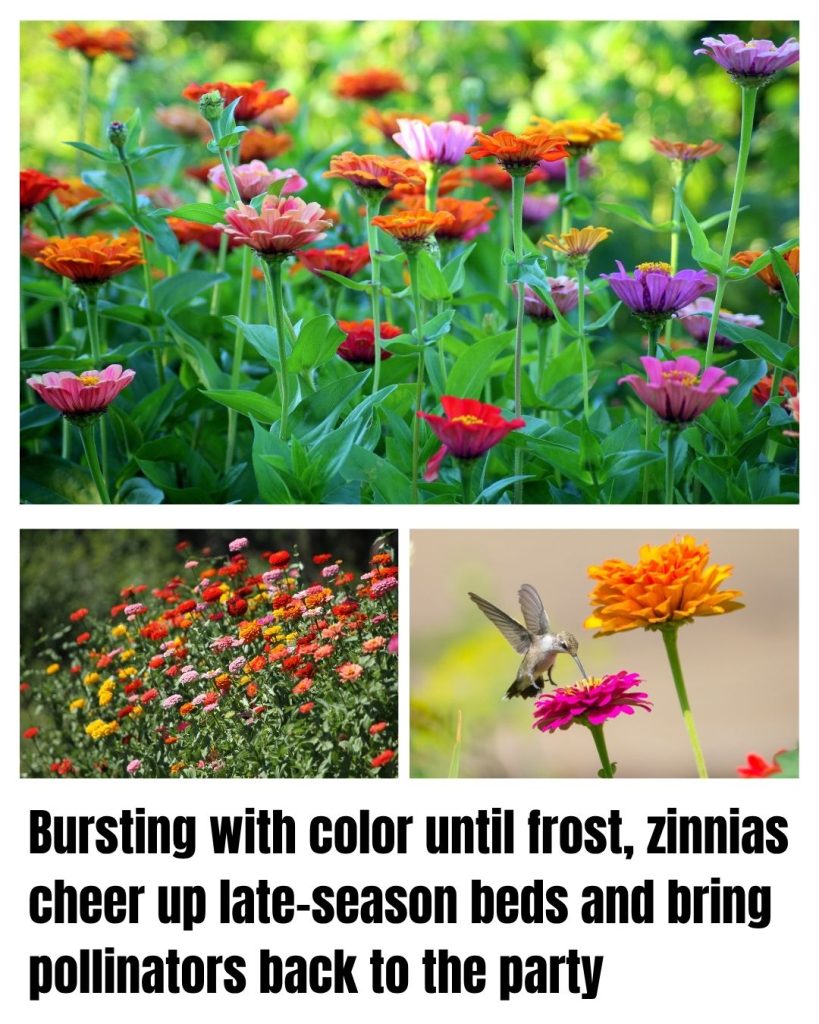
- Big, bold color in every shade, long stems for cutting.
- Blooms to frost if you keep them deadheaded.
- Bee and butterfly favorite that handles heat.
Illinois timing: Transplant in late July through August statewide for fall flowers. Direct sow 2 weeks earlier if you prefer seed. North IL should aim for late July to early August so buds set before the first cold snaps.
Water and soil: Full sun, good drainage, and even spacing to limit powdery mildew in humid stretches. Water at the base early morning to keep foliage dry.
Where it shines: Cutting beds, mailbox clusters, and sunny borders that need reliable color you can see from the street.
2. Cosmos (Cosmos bipinnatus & C. sulphureus)
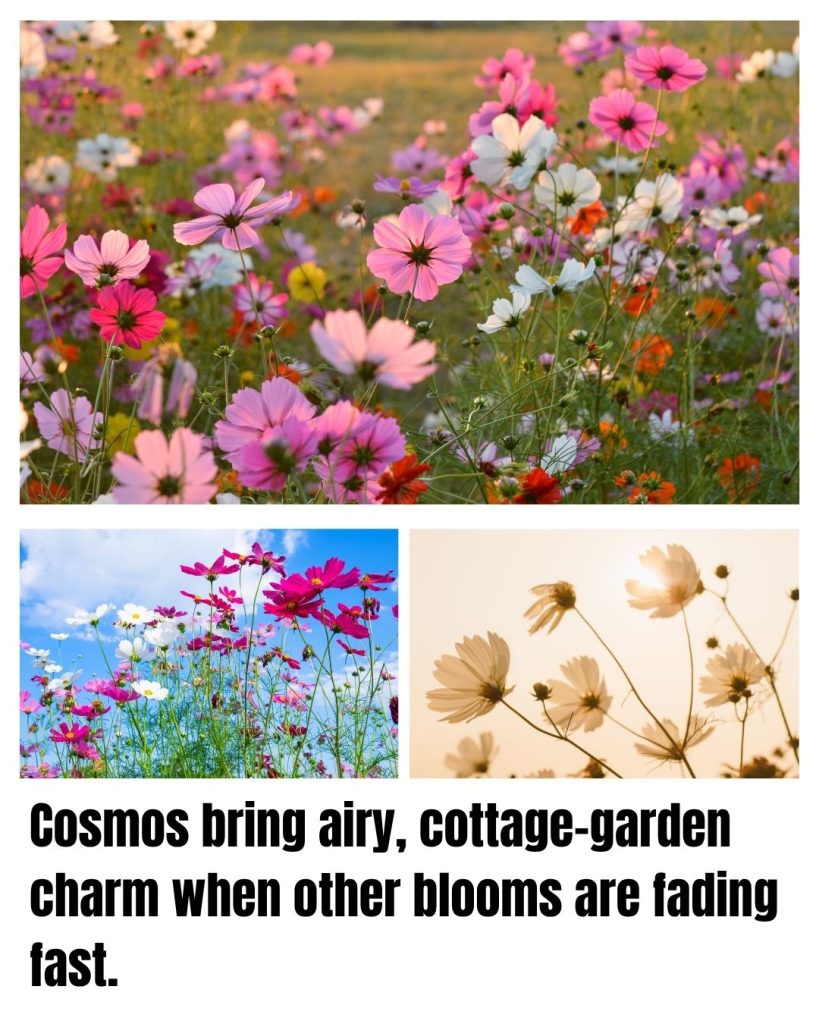
- Airy foliage and clouds of daisies that sway in the breeze.
- Easy from seed with a long bloom season.
- Drought tolerant and happy in lean soil.
Illinois timing: Sow or transplant in late July to mid August in North and Central IL, and into late August for South IL. The orange and yellow C. sulphureus types handle lingering heat very well.
Water and soil: Full sun and average soil are best. Too much nitrogen gives foliage at the expense of flowers. Pinch once to encourage branching on taller types.
Where it shines: Cottage borders, pollinator strips, and along fences where you want soft movement and easy color to the end of the season.
3. Celosia (Celosia cristata and C. plumosa)
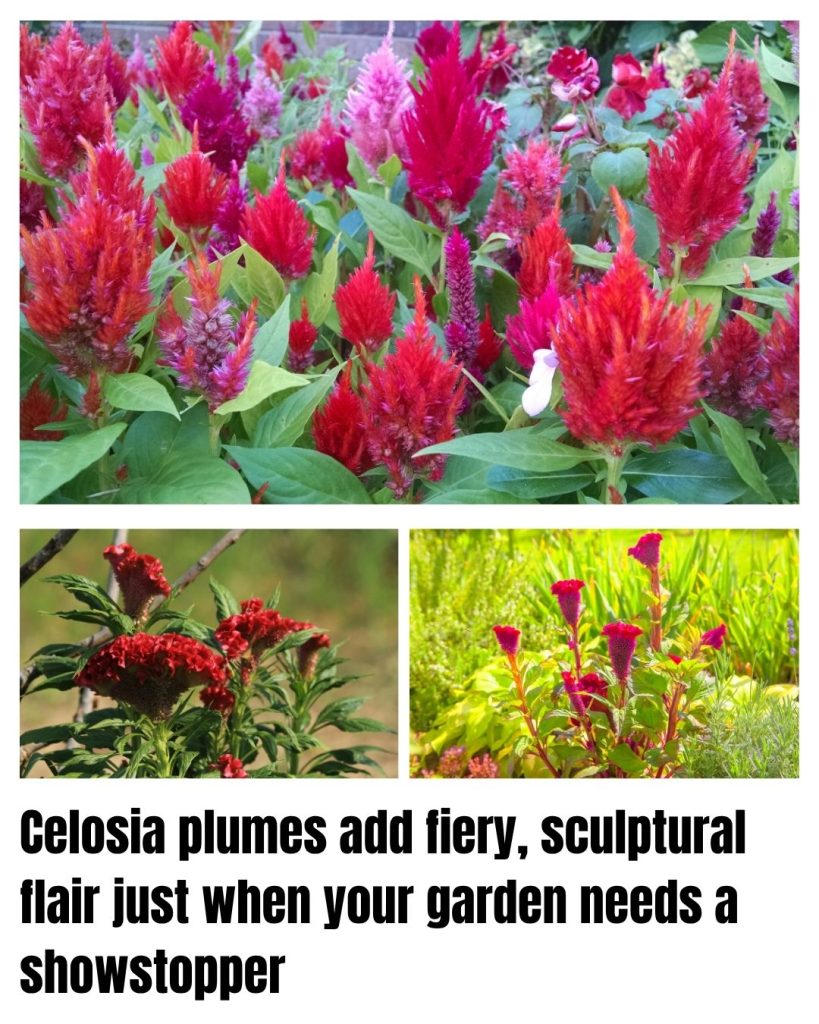
- Flame-like plumes and coral fans for high-impact color.
- Heat lover that stays upright in summer humidity.
- Great fresh or dried for fall arrangements.
Illinois timing: Transplant mid July through late August statewide. Choose plume types for vertical accent and crested types for bold texture. Pinch once when small for bushier plants.
Water and soil: Full sun and drainage are key. Avoid heavy feeding which can make stems soft. Mulch to steady moisture during late heat waves.
Where it shines: Front yard beds, harvest displays, and mixed borders with salvia and ornamental peppers for a fiery palette.
4. Globe Amaranth (Gomphrena globosa)
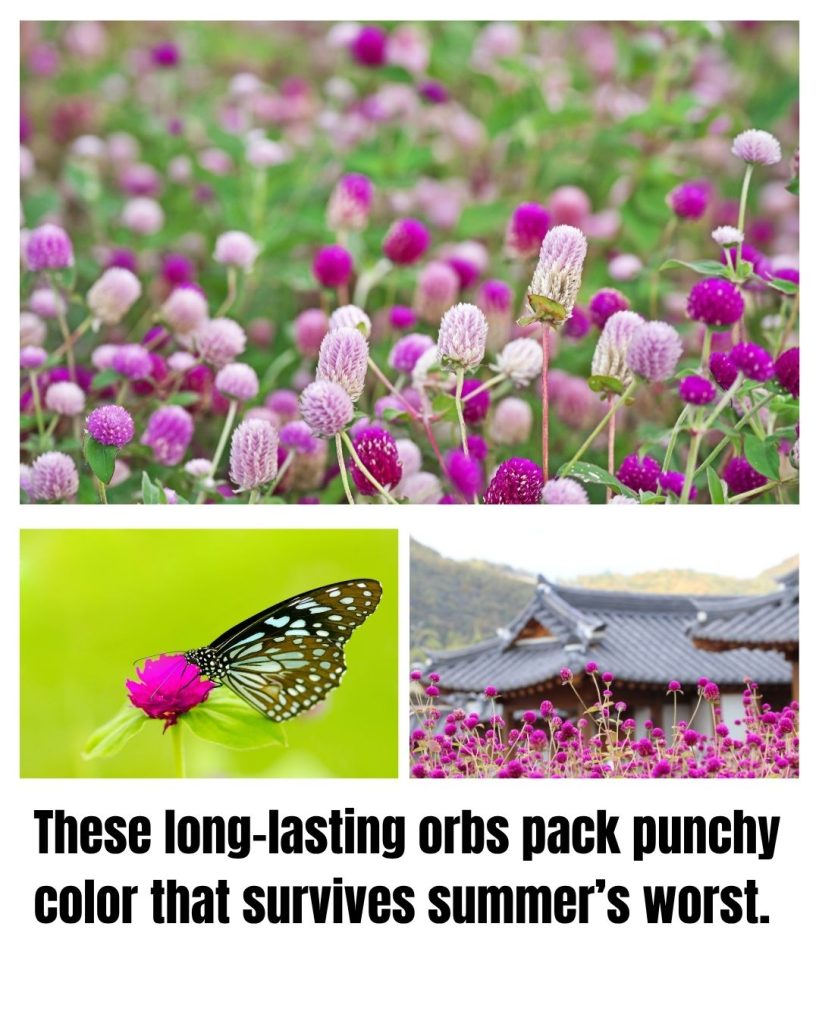
- Paper-like pom poms in magenta, pink, and white that hold up in heat.
- Compact habit for edging and containers.
- Excellent dried flower that keeps its color.
Illinois timing: Transplant late July through August. Start seed a bit earlier indoors if you want fat plants fast for fall. Keep deadheading to push new buttons.
Water and soil: Full sun, draining soil, light water once established. Tolerates clay if not waterlogged. Space well to reduce humidity stress.
Where it shines: Low borders, school gardens, and curb strips that need drought-tough blasts of color into October.
5. Tithonia (Mexican Sunflower)
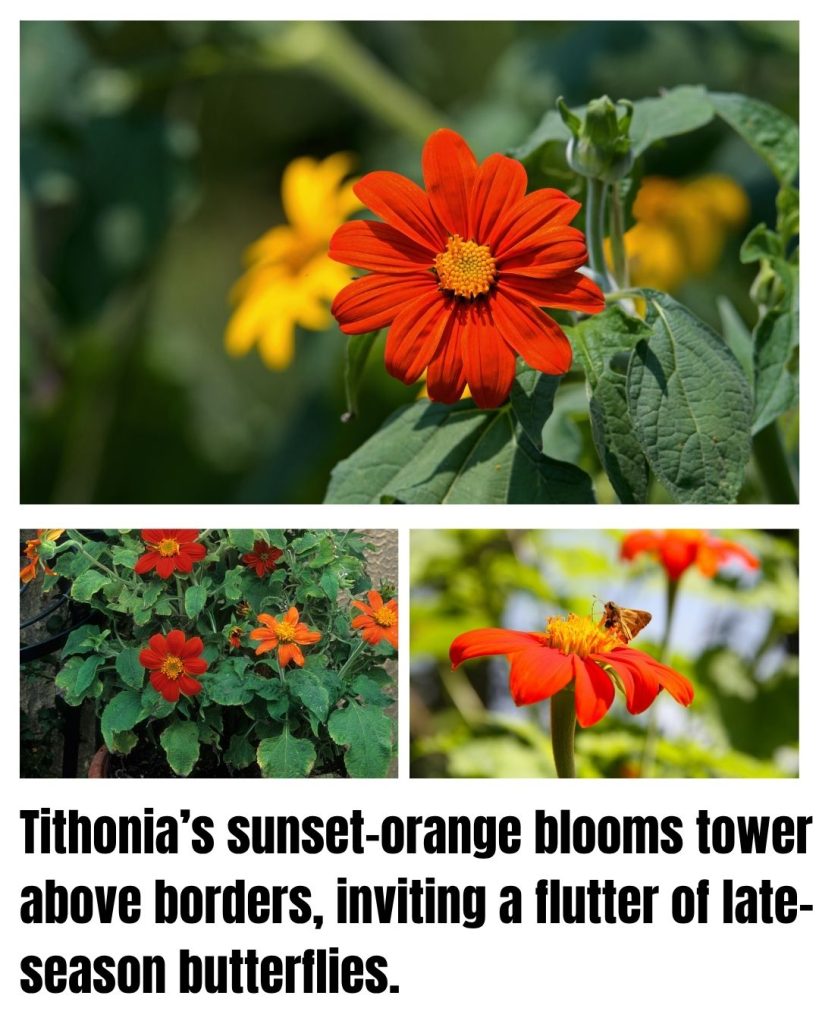
- Fiery orange daisies that glow in fall light.
- Monarch magnet during migration.
- Tall and bold for the back of borders.
Illinois timing: Transplant late July in North IL, late July to mid August in Central IL, early to late August in South IL. Stake if you are in a windy, open site.
Water and soil: Full sun, lean soil, moderate water. Too much fertilizer leads to flop. Mulch to hold moisture between fall rains.
Where it shines: Pollinator alleys, fence lines, and fall displays with blue salvia and purple aster for contrast that you can see from the road.
6. Marigold (Tagetes spp.)
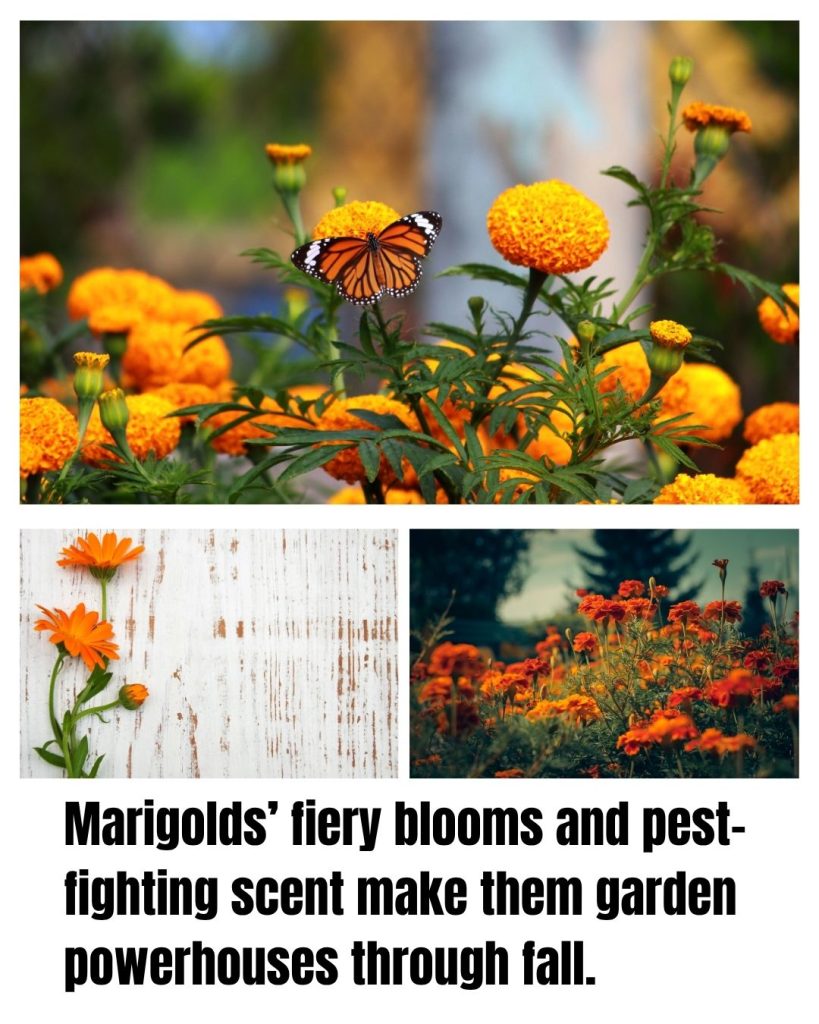
- Firecracker color in gold and orange right to frost.
- Fragrant foliage and easy care.
- Quick to bloom after planting.
Illinois timing: Transplant late July through August statewide. Choose compact French types for edging and taller African marigolds for bold mounds.
Water and soil: Full sun, average soil, and consistent moisture at establishment. Avoid soggy spots in long rain events.
Where it shines: Borders, vegetable gardens, and porch pots that need resettable color with one light shear mid-season.
7. Portulaca (Portulaca grandiflora)
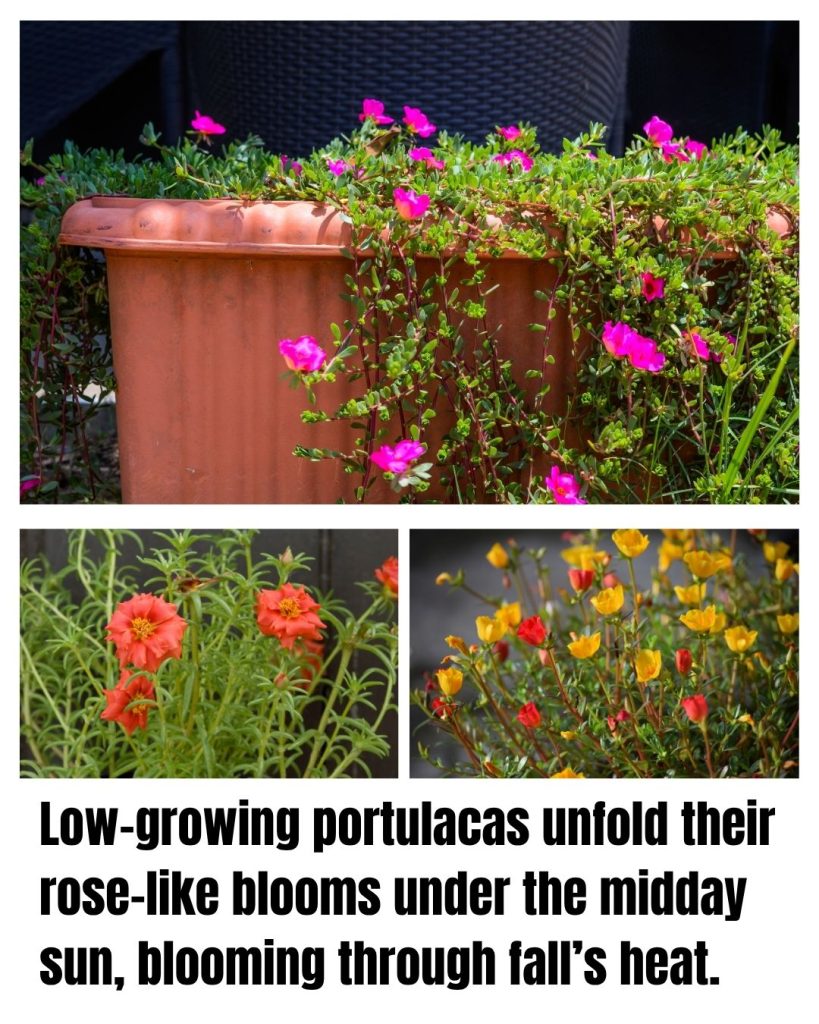
- Succulent leaves that sail through hot, dry spells.
- Sun-triggered blooms that open wide in bright light.
- Low, spreading habit that covers edges and bowls.
Illinois timing: Transplant July through August. In North IL, set by early August for best fall show before the first freeze.
Water and soil: Full sun and very sharp drainage. Berm or use containers if you have heavy clay. Overwatering shortens bloom.
Where it shines: Rock gardens, curb strips, mailbox pockets, and shallow containers where irrigation is limited.
8. Annual Salvia, Mealycup Sage (Salvia farinacea)

- Blue violet spires that add rhythm and height.
- Pollinator friendly for bees and hummingbirds.
- Reblooms after a light clip.
Illinois timing: Transplant July through late August statewide. In South IL it may push blooms well into November if frost is late.
Water and soil: Full sun, average soil, and decent drainage. Space for airflow to limit foliar disease during humid stretches.
Where it shines: Mixed borders that need structure with softer daisies like rudbeckia and asters filling around it.
9. Dahlia (tubers planted earlier, flowers late season)
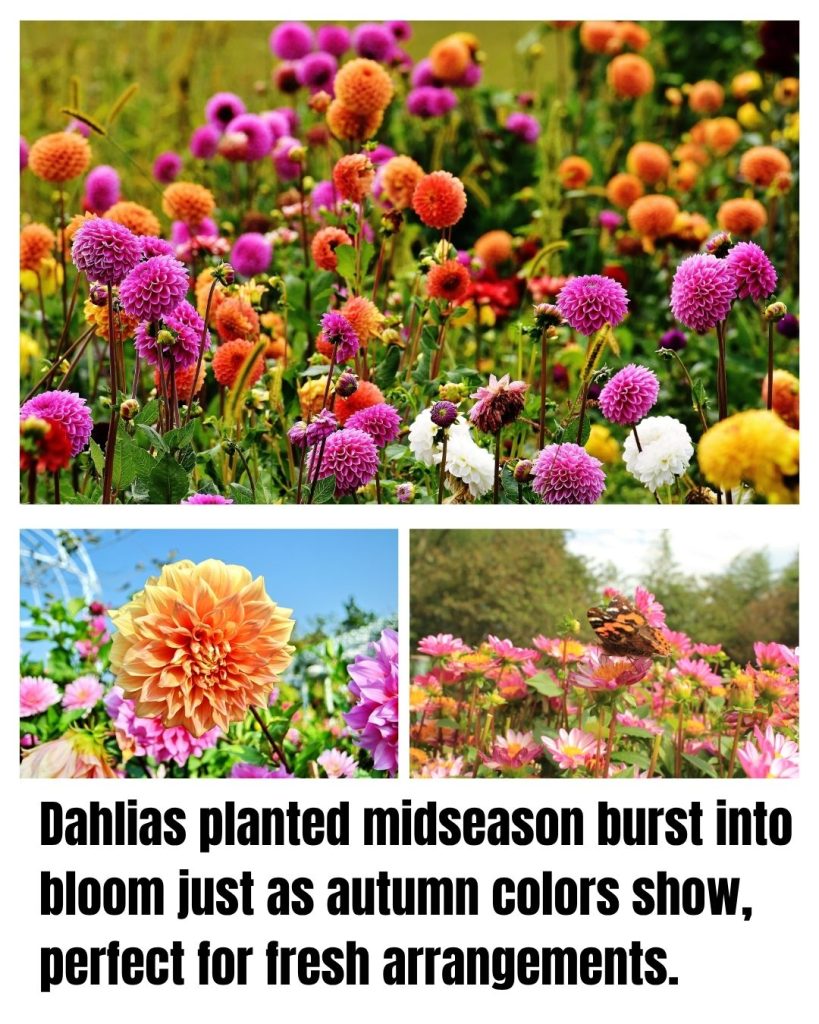
- Show-stopping blooms in every shape and color.
- Peak in late summer and fall when nights cool.
- Excellent cut flowers with long vase life.
Illinois timing: Tubers go in after last spring frost. For late-summer through fall color now, work with established plants or potted starts set in July to early August. Stake and disbud for large blooms if desired.
Water and soil: Full sun, rich and well drained soil, steady moisture at the root zone. Avoid overhead water in cool nights to limit mildew.
Where it shines: Cutting gardens and feature beds where you can enjoy weekly bouquets until frost. Lift and store tubers after a killing frost in most of Illinois.
10. Rudbeckia (annual coneflower types)
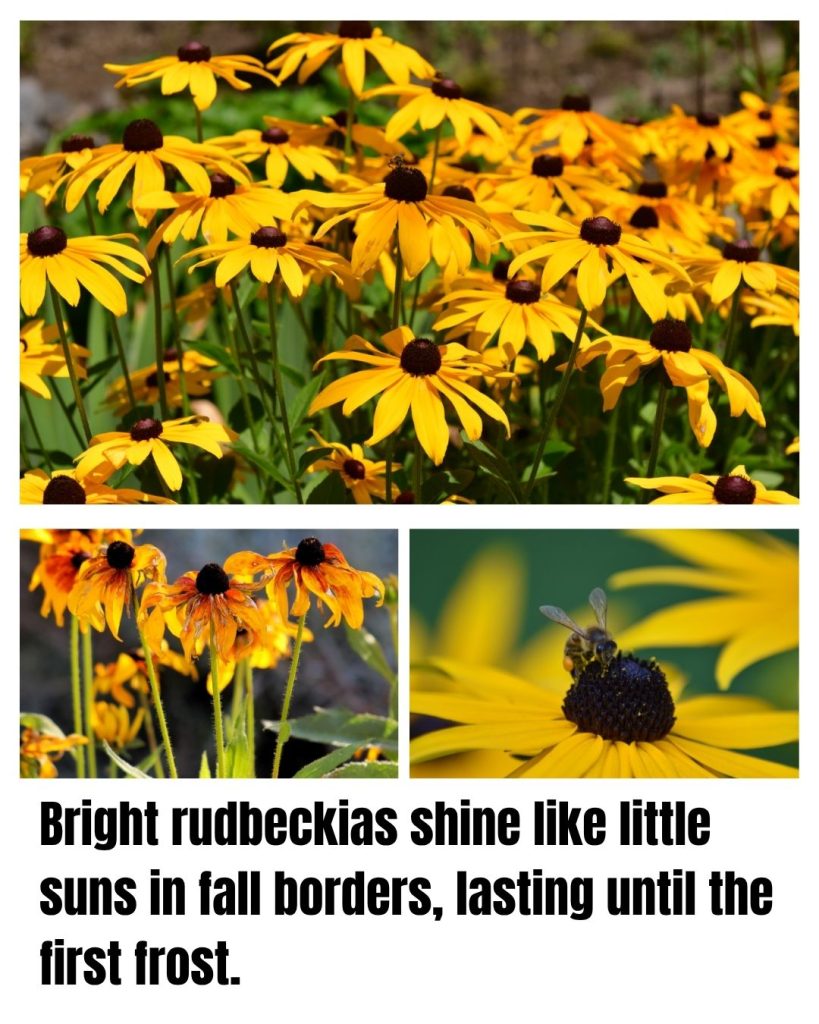
- Golden rays with dark centers that scream fall.
- Heat tolerant and sun loving.
- Long bloom with regular deadheading.
Illinois timing: Plant late July through August statewide. North IL should plant on the early side for a strong show before frost.
Water and soil: Full sun, average soil, deep but infrequent watering. Mulch to keep roots even during hot spells.
Where it shines: Mass plantings and entries paired with blue salvia and purple asters for high-contrast fall color blocks.
11. Calendula (Calendula officinalis)
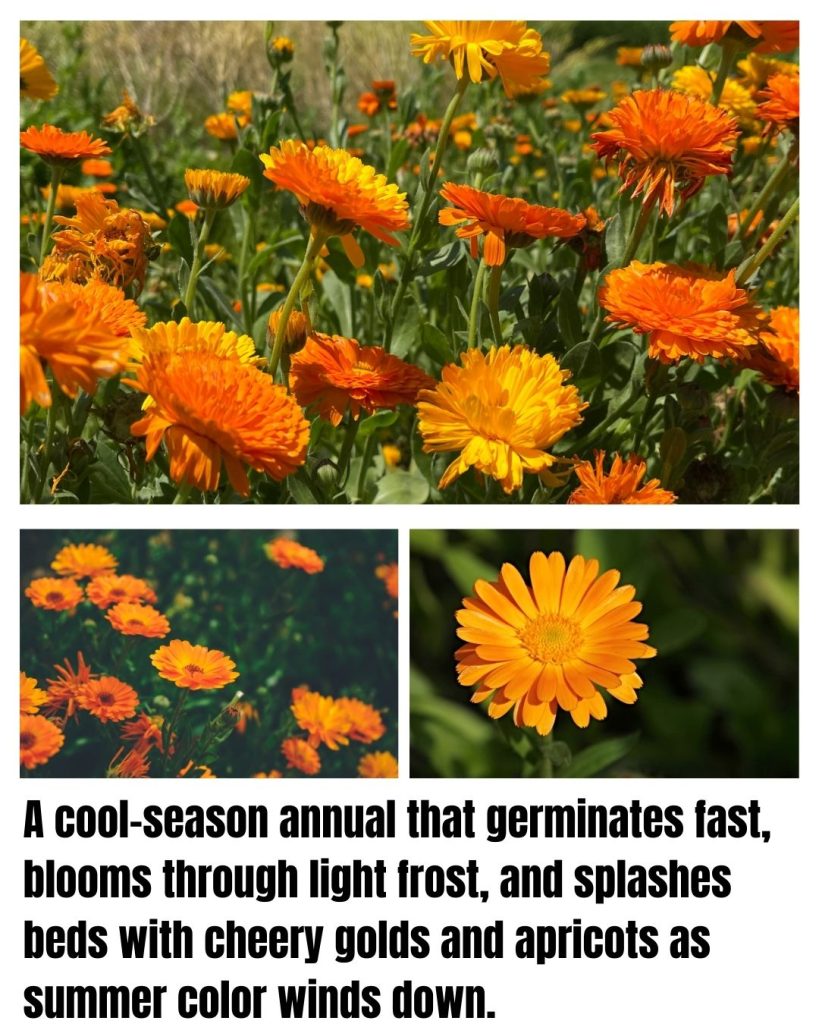
- Cool-season daisy that loves crisp fall air.
- Edible petals for kitchen use and garnish.
- Blooms through light frost with steady deadheading.
Illinois timing: Direct sow or set transplants from late August through September in Central and South IL, and early to late August in North IL. Flowers keep coming until a hard freeze.
Water and soil: Full sun to light shade, average soil, moderate moisture. Too much heat stalls flowers, which is why it shines in the fall here.
Where it shines: Front borders, herb gardens, and containers for cheerful gold and apricot tones as nights cool.
12. Sunflower (dwarf varieties)
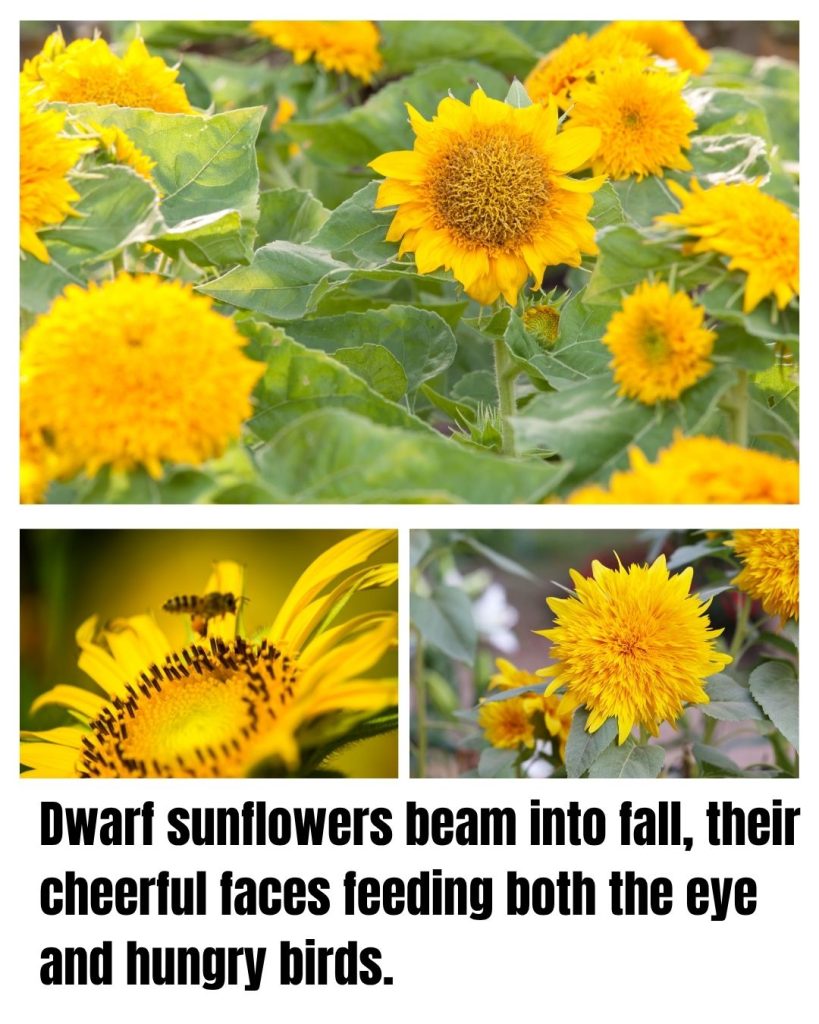
- Compact plants for beds and pots, fewer wind issues.
- Late-season faces that glow in low sun angles.
- Bird-friendly seed if you leave the heads.
Illinois timing: Plant or sow July through early August in North IL, and through mid August in Central and South IL. Choose quick 50 to 60 day types for late plantings.
Water and soil: Full sun, moderate water, and good drainage. Stake if you are in a very open, windy site.
Where it shines: Kids’ patches, fence lines, and wildlife corners where you can share seed with finches after frost.
Perennials
13. New England Aster and Aromatic Aster (Symphyotrichum novae-angliae, S. oblongifolium)
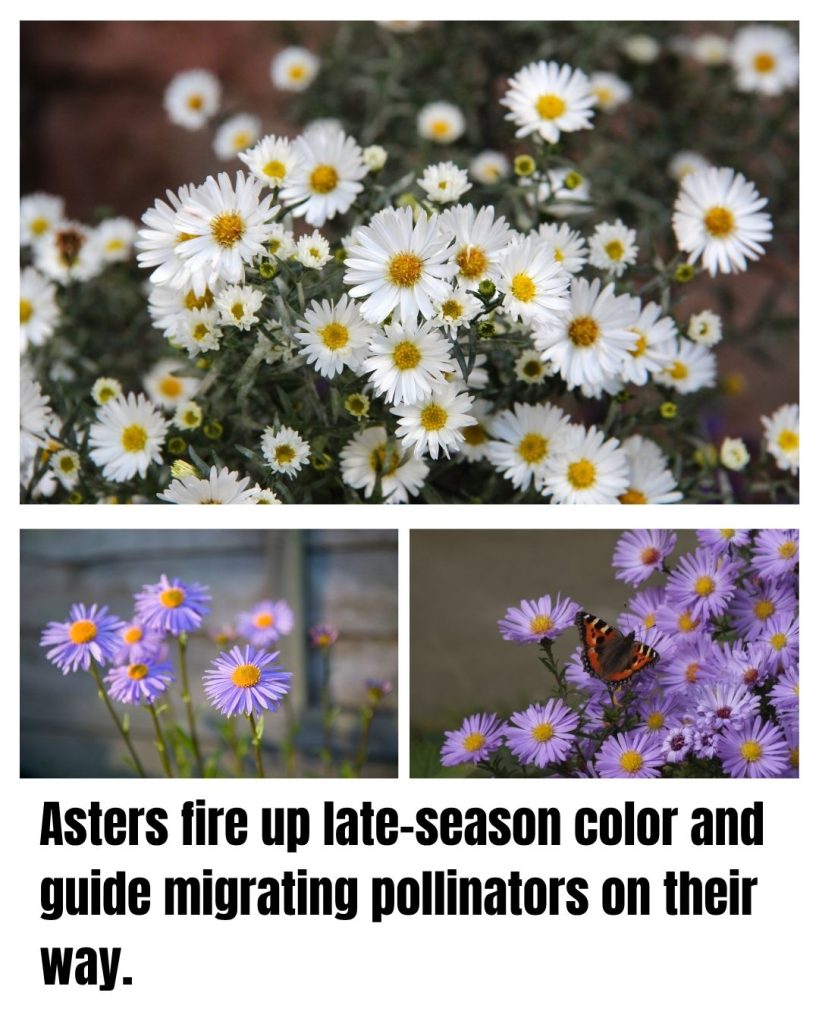
- Sheets of purple and pink daisies in September and October.
- Monarch support during migration across Illinois.
- Native and tough with minimal fuss once established.
Illinois timing: Plant spring or fall. Shear once around late June to keep plants compact and covered in bloom. Aromatic aster stays lower and is great for front borders.
Water and soil: Full sun to part sun. Handles clay if drainage is fair. A thin compost top dress after bloom keeps clumps vigorous.
Where it shines: Native beds, prairie plantings, and any place you want late color plus heavy pollinator action.
14. Sedum ‘Autumn Joy’ (Hylotelephium telephium)
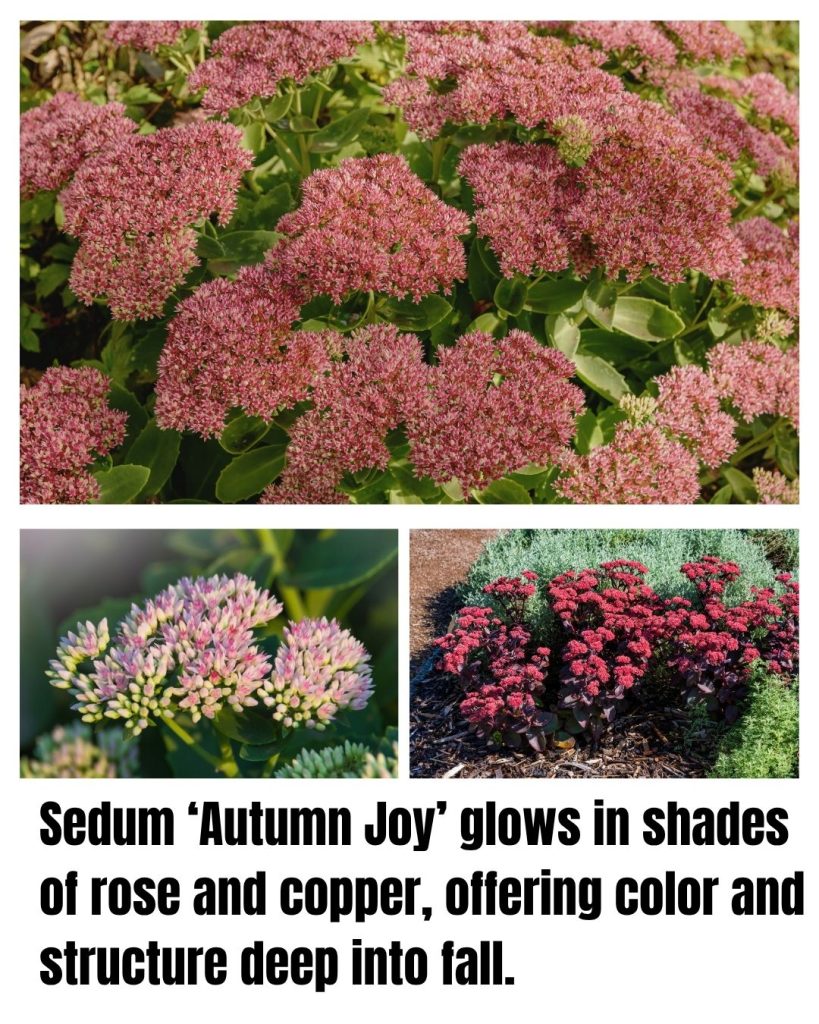
- Rose pink domes aging to copper in fall light.
- Drought adapted with succulent leaves.
- Winter interest if you leave seed heads.
Illinois timing: Plant any time soil is workable, with fall preferred for easy establishment. Cut stems to the base in early spring as new rosettes rise.
Water and soil: Full sun and lean soil. Overly rich beds lead to floppy stems, so go easy on fertilizer.
Where it shines: Xeric beds, modern foundations, and hot parkways where hose time is limited.
15. Chrysanthemum, Garden Mum (Chrysanthemum x morifolium)
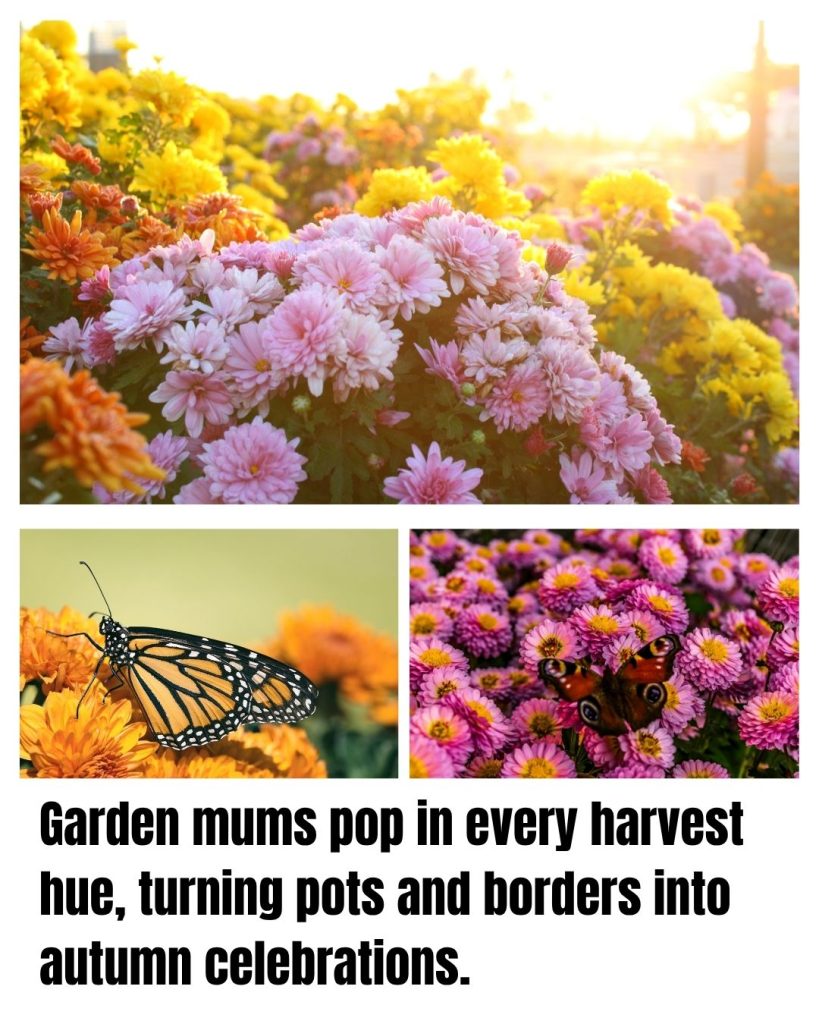
- Classic fall color from apricot to burgundy.
- Many forms for beds and porch pots.
- Late nectar for bees during warm spells.
Illinois timing: Plant in the ground by late summer if you want them to return. Potted fall mums work perfectly as seasonal color that lasts to frost.
Water and soil: Full sun and rich but well drained soil. Keep evenly moist. Pinch early summer for branching on perennialized clumps.
Where it shines: Steps, entry pots, and front beds that need instant, uniform color for game days and holidays.
16. Coneflower (Echinacea purpurea and cultivars)
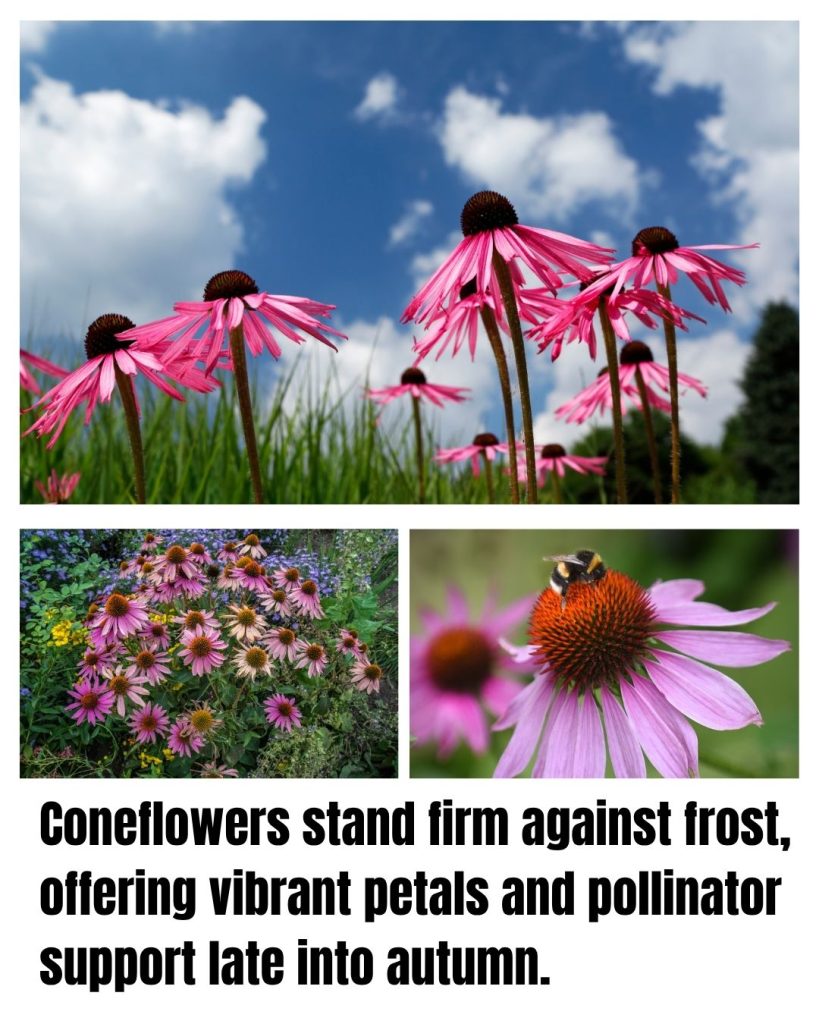
- Sturdy purple pink daisies that hold in heat.
- Drought adapted once roots run deep.
- Bird food from standing seed heads in fall.
Illinois timing: Plant spring or fall. Deadhead lightly to extend bloom into early fall, then leave some seed for finches.
Water and soil: Full sun to light shade, average soil, and good drainage. Tolerant of alkaline pockets and prairie clay with compost.
Where it shines: Prairie mixes, pollinator borders, and naturalized front yards that stay colorful with little care.
17. Helenium, Sneezeweed (Helenium autumnale and hybrids)

- Warm yellow, orange, and red daisies late in the season.
- Pollinator friendly when nectar is scarce.
- Sturdy stems that stand up to wind and rain.
Illinois timing: Plant spring or fall. In late summer plantings, irrigate weekly for the first month so roots settle before nights turn cold.
Water and soil: Full sun and evenly moist but well drained soil. Add compost in thin prairie soils to keep flowers coming.
Where it shines: Irrigated borders and rain gardens with good drainage where you want saturated fall color near eye level.
18. Black Eyed Susan (Rudbeckia fulgida)
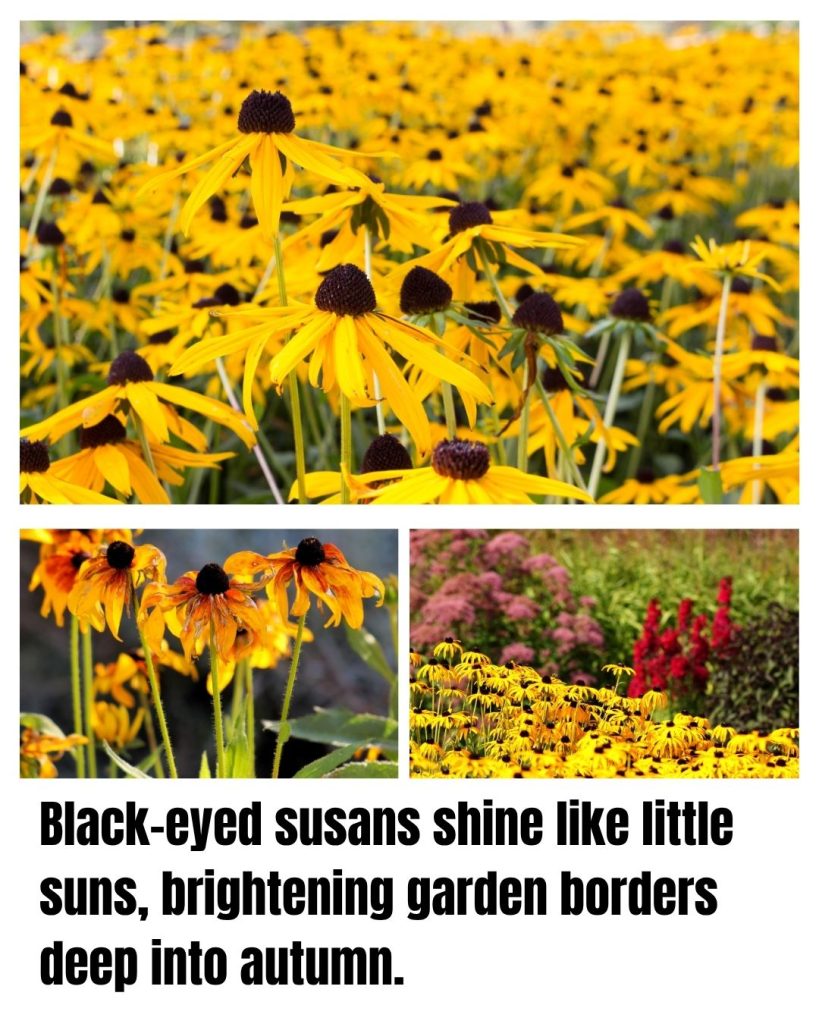
- Gold petals with dark cones that carry color for months.
- Deer-resistant foliage and stems.
- Naturalizes into friendly clumps over time.
Illinois timing: Plant spring or fall. In late summer plantings, mulch and water the first two weeks to help roots settle before cold nights.
Water and soil: Full sun, average soil, and deep watering during prolonged dry spells. Cut back old stems in late winter.
Where it shines: Prairie beds, long fence runs, and sunny parkways mixed with coneflower and asters for the classic Illinois look.
19. Goldenrod (Solidago spp.)
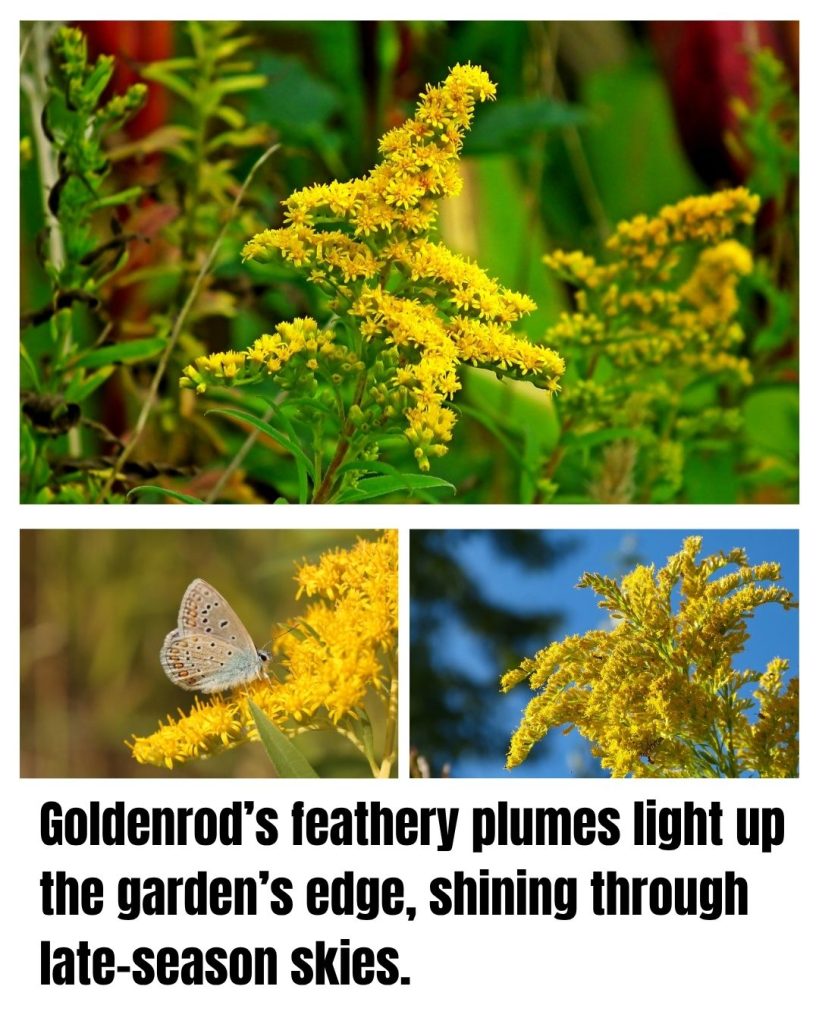
- Feathery golden plumes that light up back borders.
- Late nectar and seed for wildlife support.
- Tough and resilient in poor soils and full sun.
Illinois timing: Plant spring or fall. Choose clump-forming species like Solidago rugosa or named cultivars if you want tidy habits in small gardens.
Water and soil: Full sun, good drainage, and minimal fertilizer. Thin or divide every few years to keep stands vigorous.
Where it shines: Prairie plantings, wildlife strips, and back fences where tall color will not block windows or views.
20. Russian Sage (Perovskia atriplicifolia)
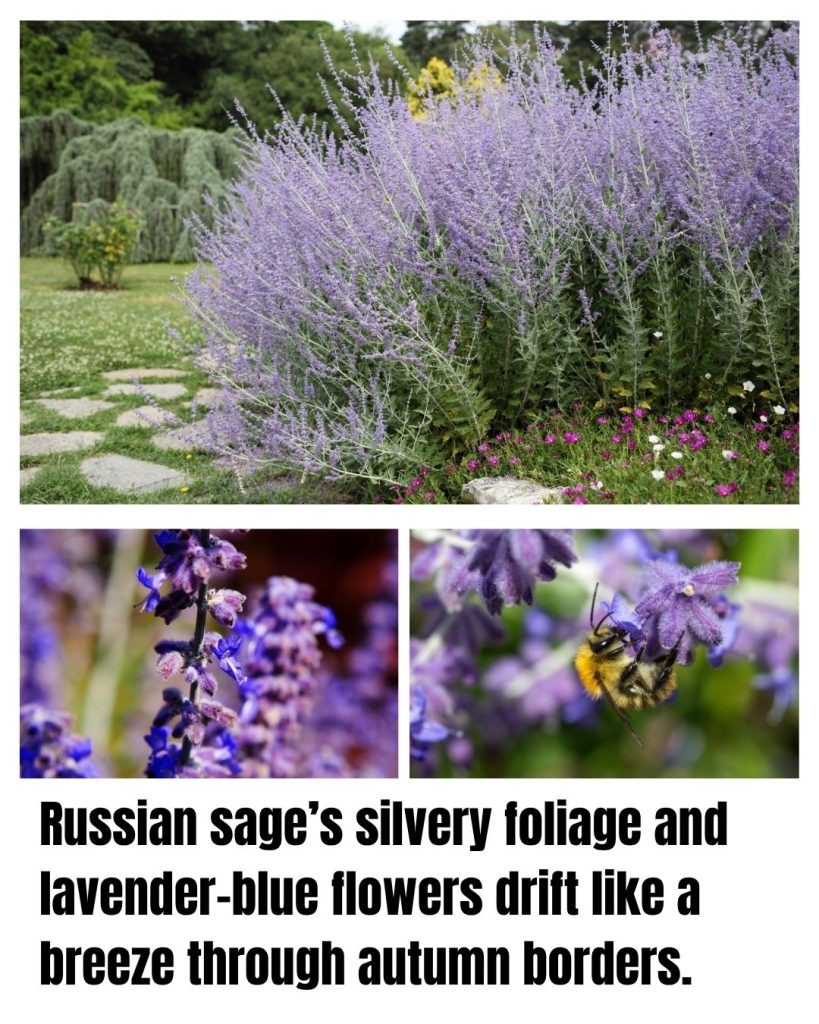
- Lavender blue haze over silvery stems from summer into fall.
- Heat and drought tolerant for tough sites.
- Pollinator magnet with long bloom.
Illinois timing: Plant fall for best take, or late summer with mulch and a few deep waterings. Cut to a low framework in early spring for tidy new growth.
Water and soil: Full sun and drainage are essential. Lean soil keeps plants upright and airy. Avoid heavy feeding.
Where it shines: Hot reflected sites, gravel gardens, and as a cool foil to warm-colored daisies in fall beds.
21. Bluebeard, Caryopteris (Caryopteris × clandonensis)
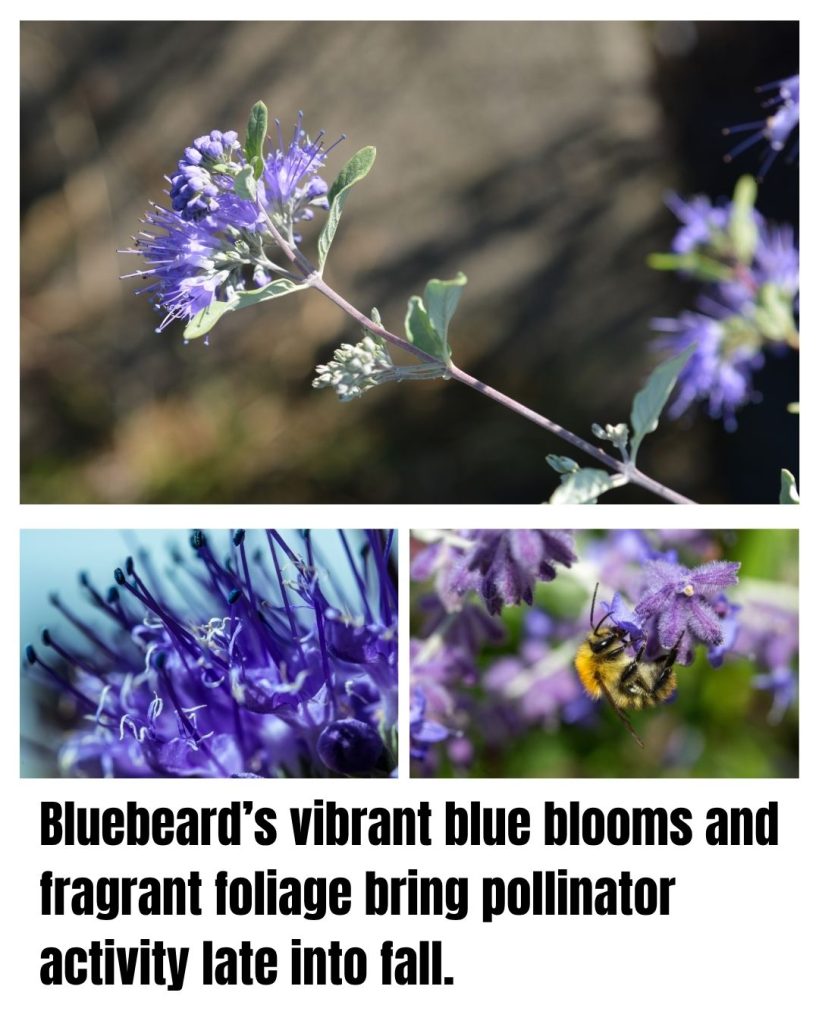
- Sky blue clusters in late summer and fall.
- Bee and hummingbird favorite on warm afternoons.
- Fast and forgiving in hot sun.
Illinois timing: Plant spring or fall. In zone 5 sites it may die back to the base and resprout. Lightly shear after the first flush to encourage more bloom.
Water and soil: Full sun, good drainage, and modest water once established. Avoid heavy clay without amending or berming.
Where it shines: Foundation beds, mixed borders, and as a blue counterpoint to rudbeckia, asters, and mums in October light.
22. Turtlehead (Chelone glabra and cultivars)
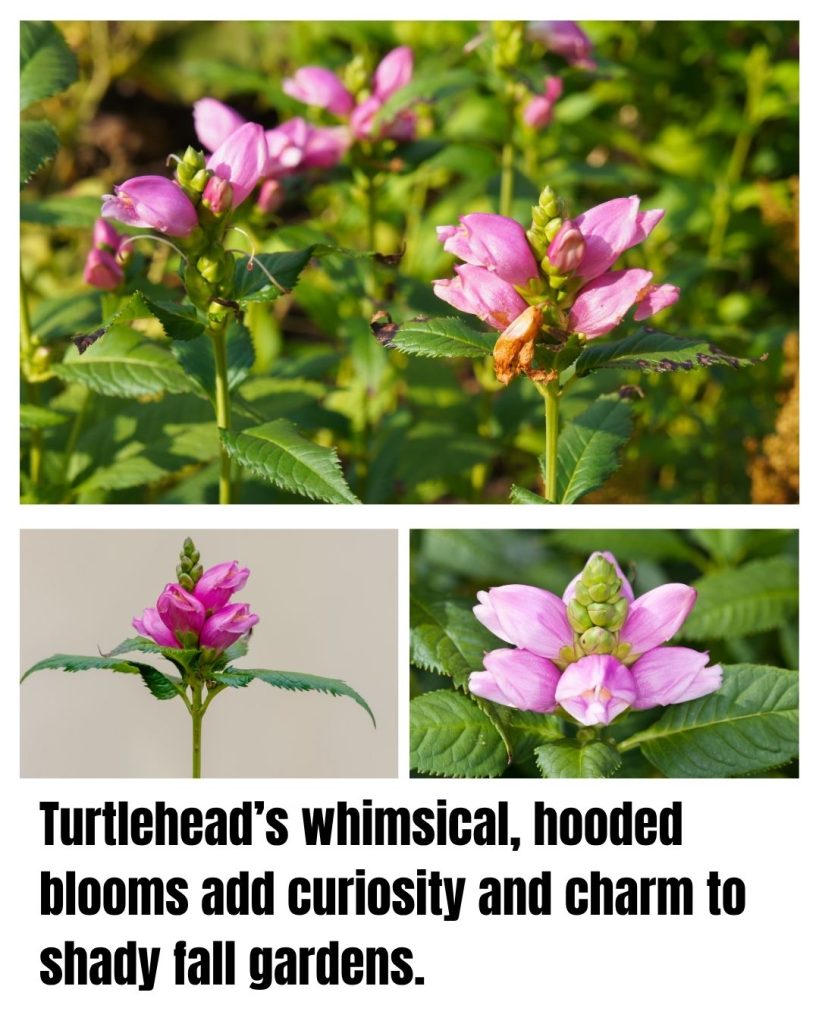
- Hooded blooms like tiny turtle heads in pink or white.
- Late season interest from August into fall.
- Happy in part shade with moist, rich soil.
Illinois timing: Plant spring or fall. Great for low spots that hold moisture but still drain. Divide every few years to keep clumps fresh.
Water and soil: Part sun to bright shade. Moist, organic soil is best. Mulch well to keep roots cool and evenly damp.
Where it shines: Shady borders, along downspout runs with amended soil, and woodland edges where you want late flowers and tidy foliage.
23. Hardy Ageratum / Blue Mistflower (Conoclinium coelestinum)
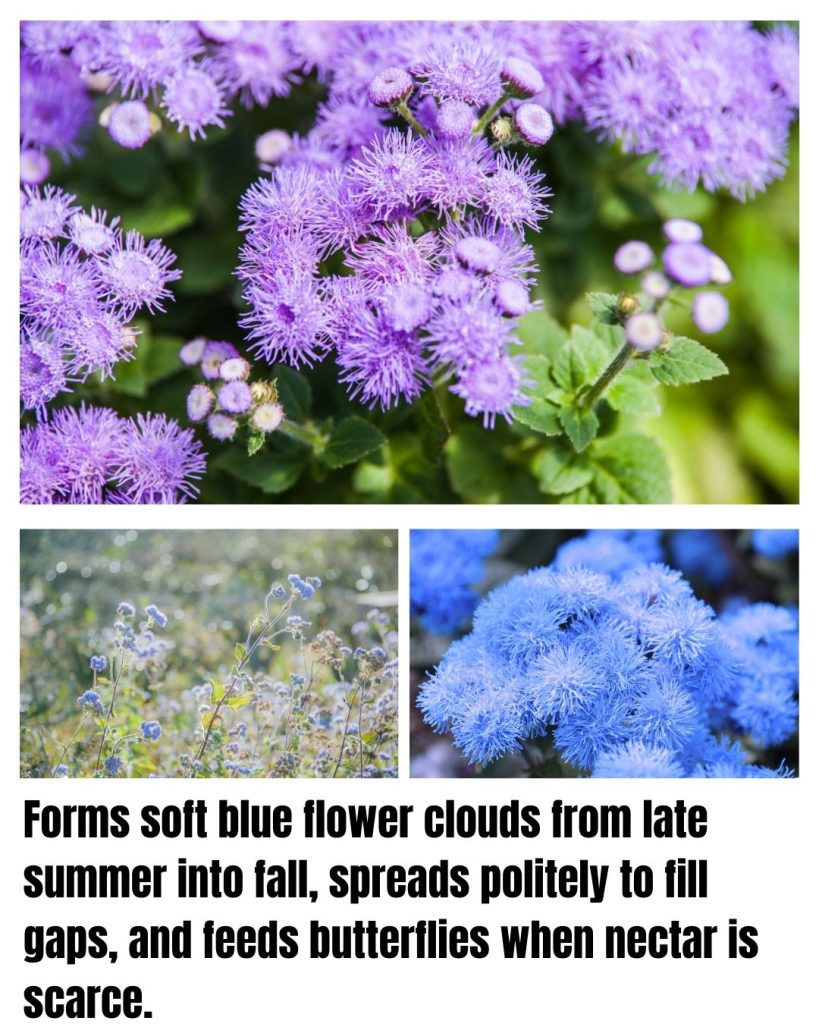
- Soft blue flower puffs from late summer into fall that glow in cool light.
- Illinois native that spreads politely to fill gaps.
- Pollinator favorite, drawing butterflies and late-season bees.
Illinois timing: Plant spring or fall; late-summer installs take if you keep it watered the first month so roots settle before chilly nights.
Water and soil: Full sun to part sun with moderate moisture; tolerates clay if it drains. Mulch to steady soil temps and retain moisture during dry spells.
Where it shines: Along fences, at the front of prairie beds, and weaving between taller asters and rudbeckias for a cool blue ribbon through the planting.
24. Perennial Salvia (Salvia nemorosa and hybrids)
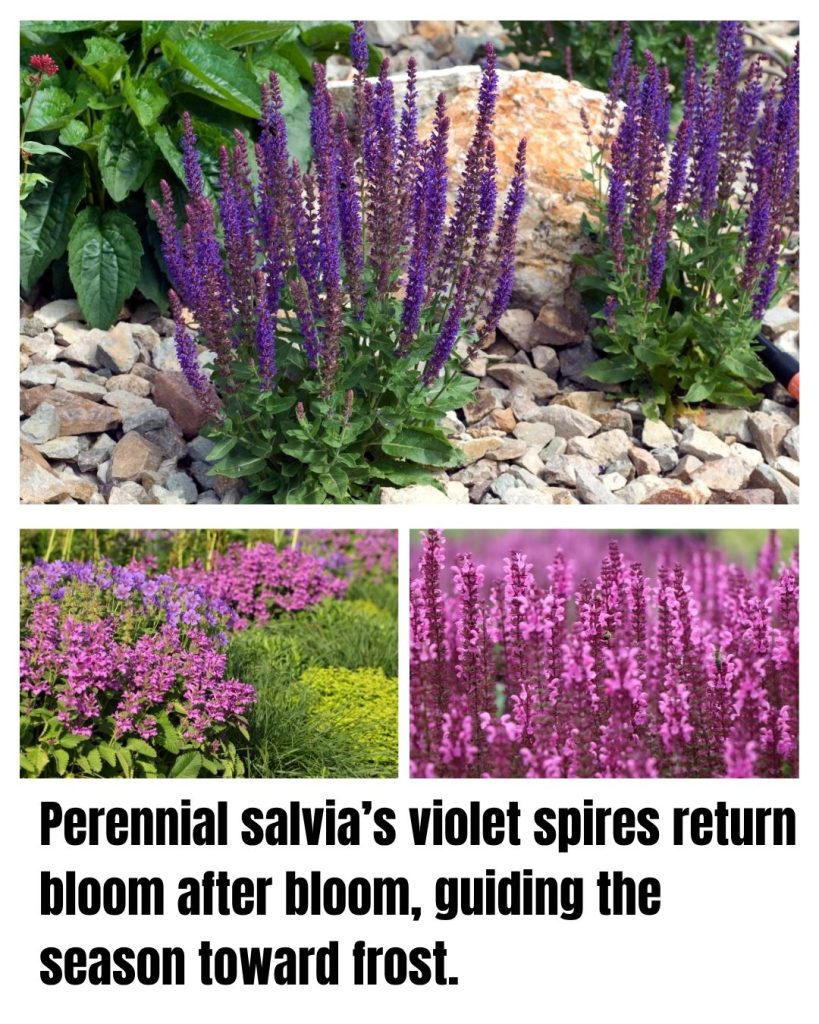
- Dense violet spikes that rebloom if sheared.
- Deer resistant aromatic foliage.
- Low care in sunny, well drained beds.
Illinois timing: Plant spring or fall. After the first summer flush, shear plants by one third to one half. Expect a strong encore as nights cool.
Water and soil: Full sun, draining soil, modest water once established. Works well in limestone heavy areas when amended with compost.
Where it shines: Cottage borders with nepeta and coreopsis, and modern beds where you need a neat, repeat-blooming edge plant.
25. Perennial Sunflower (Helianthus × multiflorus and hardy species)

- Late golden daisies on tall, branching stems.
- Cold hardy and reliable across Illinois.
- Bird friendly seed if heads are left standing.
Illinois timing: Plant spring or fall. Give room at the back of borders. Stake if your site is very open and windy.
Water and soil: Full sun, average soil, and deep watering during long dry spells. Cut to the ground in late winter to reset growth.
Where it shines: Meadows, acreage edges, and wildlife corridors where you want a tall, waving curtain of fall color without much care.
Quick Tips

Illinois soil notes: Much of the state has heavy prairie clay that holds water. Mix in compost and pine bark fines to improve structure, then mulch to reduce splash and disease pressure. In poorly drained areas, build simple berms or use raised beds so roots sit a few inches above grade.
Region tips: North IL aim earlier windows and favor fast maturing annuals like zinnia, cosmos, and dwarf sunflowers. Central IL can plant most recommendations through August and still bloom well into October. South IL often enjoys the latest frost, so you can plant annuals into late August and lean on perennials that keep pushing into early November.
Care during swings: Water early morning, not at night. Deep soaks every 4 to 7 days beat daily sprinkles and grow deeper roots. Shade new transplants with a sheet of row cover during late heat, then remove after a week. In late frosts, toss frost cloth or an old sheet over tender annuals by dusk and remove at sunrise so flowers keep rolling.